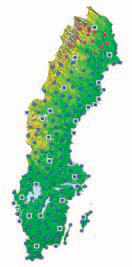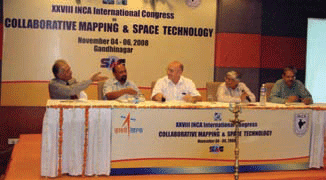
Demand for Satellite Navigation technology and applications keeps on increasing in a wide range of economical, social, technological and environmental sectors. This growing interest in the development of Satellite Navigation Systems is demonstrated by the interest of several countries in starting the development of new systems or contributing to existing ones. The major rational behind is…

PIL demands removal of country’s images from Google Earth
Public interest litigation was filed in the Bombay High Court in India, has taken exception to easy access to satellite images of the vital installations in the country through Google Earth. The petition filed by Mumbai-based lawyer Amit Karkhanis has demanded removal of images of the country from Google Earth. The petition is filed against the backdrop of terror attacks in Mumbai. The petition is likely to come up for hearing on December 18.

Coastal navigation upgrade
The UK’s General Lighthouse Authorities (GLAs) have awarded a £4m contract to VT Communications for the upgrade of 14 Differential Global Positioning Service reference stations. The upgrade includes adding the capability to use modernised GPS signals that will be needed for tracking the future satellite navigations systems, Galileo and GLONASS. www.vtplc.com

New GIS software from India
The Space Applications Centre and Scanpoint Geomatics in Ahmedabad have released a new product, IGIS. It has been developed to a requirement from Indian Space research Organisation for a GIS software that could ingest data from its satellites and turn out information products. It contains an integrated image processing engine and a GIS. www.scanpointgeomatics.com

Canalys: EMEA Q3 GPSs phone shipments overtake PNDs
According to Canalys, shipments of PNDs in the Q3 to Europe, the Middle East, and Africa fell to 4.3 million from 4.8 million in Q2, while shipments of GPS-enabled smartphones soared, rising from 4.7 million to 10.4 million. Based on its latest research, the firm estimates that global shipments of PNDs in Q3 2008 rose 14% compared to Q3 2007, with North America and Asia Pacific still seeing considerable volume growth of 49% and 25% respectively. The risk to PND vendors is likely to rise further as the economic situation forces more consumers to take a hard look at their discretionary purchases/ www.canalys.com
December 2008
GEOExpo 2008 China
2 – 4 December 2008,
Shanghai, China
sales@chinageo-expo.com
http://www.ChinaGeo-Expo.com
January 2009
ESRI Asia Pacific User Conference
20-21 January 2009
Singapore city,Singapore
http://www.esri.com/events/apuc/index.html
Intergeo East
27-29 January 2009
Istanbul,Turkey
http://www.intergeo-east.com
February 2009
Trimble Dimension 2009
123-25, February 2009
The Mirage, Las Vegas, USA
http://www.trimbleevents.com/dimensions09
March 2009
Munich Satellite Navigation Summit Conference
March 3-5,2009
Munich, Germany
http://www.munich-satellite-navigation-summit.org
April 2009
GEO Siberia 2009
21-23 April
Novosibirsk, Russian
nenash@sibfair.ru
http://www.geosiberia.sibfair.ru
May 2009
International Conference on …

SWEPOS™ is a network of GPS/GLONASS reference stations which began as a co-operation between the National Land Survey of Sweden and Onsala Space Observatory. The early design phases of SWEPOS were made in 1992. It was already then stated that the network should be of both scientific and practical benefit to the professional GNSS users and the public. The purposes of SWEPOS are mainly to [1]…
India witnesses another onslaught of brutality, helplessly.
A country of more than a billion, the world’s largest democracy, the rising Asian space power, nuclear power… was held to ransom.
For more than 60 hours.
By a small, but heavily armed, well-trained and highly motivated group.
An execution of meticulous planning, using advanced technologies like digital maps, satellite …
The three days of INTERGEO, which was held at the Bremen Exhibition Centre this year, have confirmed that the world’s largest congress trade fair for geodesy, geoinformation and land management has a special place in the industry.
“INTERGEO is a very important event to show our latest developments and is …

As geospatial technology becomes an integral part of our daily lives, our ‘worldview’ grows and the world becomes a ‘smaller’ place. The technology itself has many facets, managed and used by a growing number of people. To understand how the interactions are taking shape among the various players of geospatial technology, …










 (5.00 out of 5)
(5.00 out of 5)